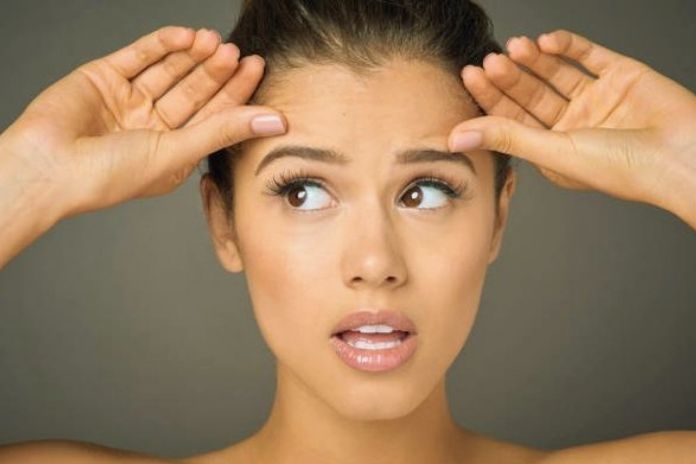Please find out how and at what age expression lines form and which incorrect habits favor their appearance. The appearance of the first wrinkles on the face is one of the most natural signs of the passing of time, and – while for some, it is a testimony of the experience acquired over the years – for others, they are blemishes to be fought at all costs.
Although serenely accepting the advance of age is certainly a wise choice, this does not mean that it is not possible to intervene with beauty treatments aimed at reducing the signs of expression and preventing the formation of new wrinkles on the face to keep the long as possible for healthy, smooth, youthful-looking skin.
The skin is a surprising organ, incredibly elastic and resistant. Still, with age, it spontaneously loses its compactness due to the deterioration of its tissues and the slowing down of its processes. But how exactly do wrinkles form? Understanding the mechanisms underlying this skin blemish makes it easier to know how to prevent and fight it effectively: let’s find out what expression wrinkles are and what factors tend to favor and speed up the aging process.
What Are Wrinkles, And How Do They Form?
Wrinkles are essentially furrows, light or deep, which appear on the skin’s surface and are the direct consequence of different causes. Both genetic and hormonal factors and external environmental elements are responsible for skin aging. If you want to look at the scientific explanation of how wrinkles form, you first need to look at the delicate role of fibroblasts in maintaining skin elasticity.
Fibroblasts are, in fact, connective tissue cells responsible for the production of glycoproteins such as collagen, elastic fibers such as elastin, reticular fibers, and glycosaminoglycans such as hyaluronic acid: all structural elements of fundamental importance in maintaining skin compactness.
With aging, fibroblasts progressively slow down their activity, reducing the synthesis of their essential products for supporting the dermis: the failure of its supporting tissue causes the first furrows to appear on the skin. Advancing age also brings with it a limited production of sebum, which impacts the balance of the hydrolipidic layer of the skin, i.e., the film that covers the skin and defends it from external aggressions: the skin, therefore, tends to be more exposed and less hydrated and greater dryness is inevitably linked to an increased presence of wrinkles on the surface.
First Wrinkles: At What Age Do They Form?
One of the most frequent questions is understanding at what age the first wrinkles can form. Skin aging – although an extremely subjective factor – begins around 25, even if the process undergoes a strong acceleration as time progresses. Menopause, for example, is one of the most critical moments for the formation of wrinkles, as the body undergoes a significant decrease in hormones such as estrogen, which are also crucial in maintaining skin firmness, as well as various alterations in the activity of cells and glands that lead inexorably towards a more evident aging phenomenon.
Different Variables That Impact The Presence Of Wrinkles
The dreaded free radicals play a key role in aging. These are cell waste products whose disposal is generally kept under control by the efficient antioxidant processes that the body puts in place: when the body physiologically decreases its performance, this mechanism is also affected and sets in motion oxidative stress capable of hindering the work of cells, favoring their degeneration, aging and – consequently – the appearance of wrinkles.
Furthermore, unprotected exposure to UV rays is one of the habits that, more than others, manages to speed up the aging processes: photoaging is caused by ultraviolet radiations, which favor the formation of free radicals and undermine the correct work of the fibroblasts, leading to an early appearance of spots and wrinkles. Even the blood supply to the skin decreases with age due to the alteration of the microcirculation, and the skin is less supplied with oxygen. Essential nutrients, such as collagen and elastin, cannot guarantee the right amount of energy for their natural cellular processes.
Smoking And Alcohol Incorrect Habits That Favor Skin Aging
In addition to imprudent exposure to the sun, two other routines are direct causes of loss of tone, firmness, and luminosity of the skin, namely the abuse of alcohol and tobacco. Consuming excessive quantities of alcohol leads to severe skin dehydration, the loss of vitamins and antioxidant substances in the body, and a gradual reduction in the elasticity of the capillaries: all factors capable of enormously affecting the appearance of the skin.
Smoking, on the other hand, also causes poor skin oxygenation, the cause of opacity, a dull complexion, and the production of a higher-than-normal number of dangerous free radicals.
But that’s not all: nicotine causes vasoconstriction. It compromises the health of blood vessels, with obvious consequences on the appearance of the skin, which will see wrinkles and small and large furrows appear more quickly. The typical “barcode” wrinkles present in the perioral area of smokers are finally caused by the mechanical movement of sucking cigarettes which, over time, leaves indelible marks on the face. The triggering factors behind wrinkles’ appearance are diverse and heterogeneous: changing incorrect habits and introducing beauty rituals appropriate to your age and skin type into your daily life are two excellent strategies for counteracting the signs of aging and enjoying long-lasting soft and fit skin.
Also Read: 12 Tips To Keep Your Skin Young

